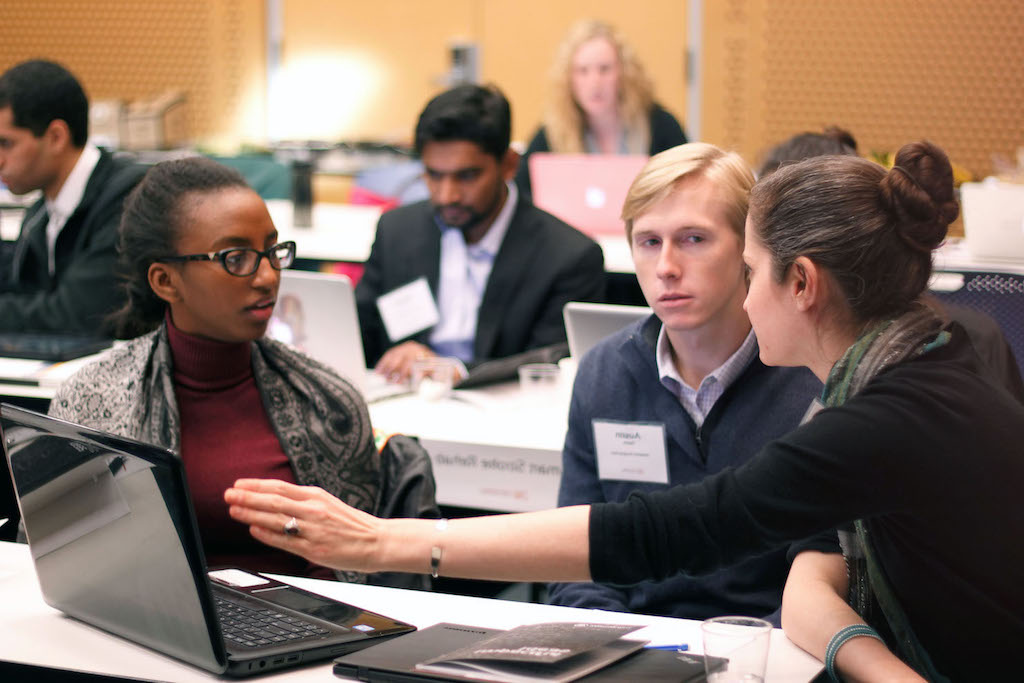
Every invention starts with assumptions in a variety of areas – target markets, clinical needs, pricing, design, and so on. But what happens when those assumptions don’t ring true in the real world? What if they don’t translate into a practical product or sustainable business? Janine Elliott, program officer for the VentureWell E-Team program, has seen many teams return to the drawing board once they challenge assumptions – which is a good thing. Countless promising startups have failed as a result of hunches outweighing cold hard facts.
Elliott recently spoke with E-Team grantee, Eric Miller. Miller is a biomedical engineering master’s student at Carnegie Mellon University and co-founder of a startup called S.A.F.E., the Smart Automatic Foot Exam. During a biomedical engineering design course, he and his team developed a medical device to help prevent diabetic foot ulcers and the complications that can arise as a result. According to a report in The New England Journal of Medicine, somewhere between 19 and 34 percent of people with diabetes will likely be affected by foot ulcers at some point in their lives. Given the relatively large percentage of diabetes patients suffering from foot ulcers, the team assumed that there was a great need for their device.
However, the E-Team training challenged them:
Is there a “want” to correlate with the perceived “need”? Could S.A.F.E. start a successful business simply based on an assumption that there is a market for their device?
Elliott and Miller’s conversation revealed some key learnings that will benefit other early-stage innovators looking to transform their idea into a startup before they venture too far down the startup path. Below is an excerpt of their conversation.
Tell us how the idea for your innovation came about.
We initially considered a wide variety of biomedical problems and systematically refined our list based on the perceived level of interest, the potential significance of a clinical solution, and technical feasibility, among other criteria. Members of the design team shared personal experiences detailing how diabetes, specifically the development and progression of diabetic foot ulcers, drastically impacted the lives of their loved ones. With these anecdotal experiences in mind, we conducted research to determine the prevalence of foot ulceration among diabetics, the consequences of developing a foot ulcer, contemporary clinical treatments, and potential preventive mechanisms. This research, in addition to consultations with a local wound healing physician, led us to believe that there was an opportunity for innovation in the area of early-onset ulcer detection, which could potentially prevent the progression of ulceration and its resultant complications.
What assumptions did you have about your idea when you started?
Generally, I had naively assumed that the path of a good idea – from conception to market – would largely be unimpeded and practically guaranteed, especially if it effectively fulfilled a previously unmet need, regardless of the industry. With respect to S.A.F.E., I (and others on the design team) also assumed that the idea would be most effective when implemented as a point-of-care diagnostic device, where it would serve primarily as a tool the physician uses to help patients manage the diabetic foot during routine examinations. We based this assumption on current clinical practices for monitoring the diabetic foot, which commonly consist of a simple (albeit limited) visual examination of the plantar surfaces of the feet, and the sparsely-populated clinical competitive landscape.
How has your idea evolved since testing those assumptions?
After consulting several members of the teaching staff during the VentureWell E-Team program, we gradually began to realize that a point-of-care medical device may not be the most beneficial implementation of our idea. The workshop presentations, exercises, and discussions facilitated the re-evaluation of the principal application of our idea. Ultimately, we concluded that the device would better serve its primary intended beneficiaries (i.e. diabetics) if implemented as a home-based means for consistently recording and analyzing physiological data. Specifically, temperature distribution across the plantar surface of the foot in order to detect abnormalities indicative of impending ulceration. These data can be shared with the patient’s primary care provider, who can initiate clinical intervention (e.g. foot offloading, customized orthotics, etc.) when necessary. We also envisioned integrating our idea into pre-existing products, such as smart scales.
What was the most valuable aspect about “kicking the tires” of your idea?
It is easy to become so immersed in your idea that you forget to take a step back to objectively assess it. Kicking the tires of the idea showed me that many perceived certainties regarding the idea’s development and implementation were, in fact, not so certain after all.
Knowing what you know now, what would you have done differently?
I would have preferred to maintain this objectivity throughout the different phases of the idea’s development. My role in the development was primarily technical, and I initially did not devote much, if any, of my time to entrepreneurial thinking around the invention. The E-Team program clarified and stressed the importance of truly understanding the industry in which we are operating and being able to articulate how our invention contributes value to this industry. I now understand that these entrepreneurial elements are integral to the success of the idea.
What advice do you have for other student inventors?
Regularly challenge assumptions throughout the development of the idea. Is your invention providing a solution to the right problem? Could the invention’s application be more beneficial or significant in a different industry, field, or discipline? Do you truly have freedom to operate? If your invention is a physical object, consider its entire life cycle as you design, from sourcing materials for its construction to its fate following decommissioning (if applicable). Finally, develop an understanding of how to navigate the intellectual property landscape so that you may establish and protect your invention without infringing on others’.
What’s next for S.A.F.E.?
Several of the original members of the design team have graduated and presumably do not intend to continue working on the project, so the recruitment of new members is a current priority. In addition to recruitment, efforts will be directed toward the construction of a fully-functional, self-contained prototype.
This article was originally published on LinkedIn.
About the Author

Janine Elliott is the curriculum designer and primary instructor for the VentureWell E-Team program. She helps student entrepreneurs vet their markets, build business models, and prepare them to raise first equity investments. To inform ongoing curriculum development, she can often be spotted networking in the Boston cleantech and healthcare communities. Previously she was a co-founder of a cleantech materials startup based in the San Francisco Bay Area.